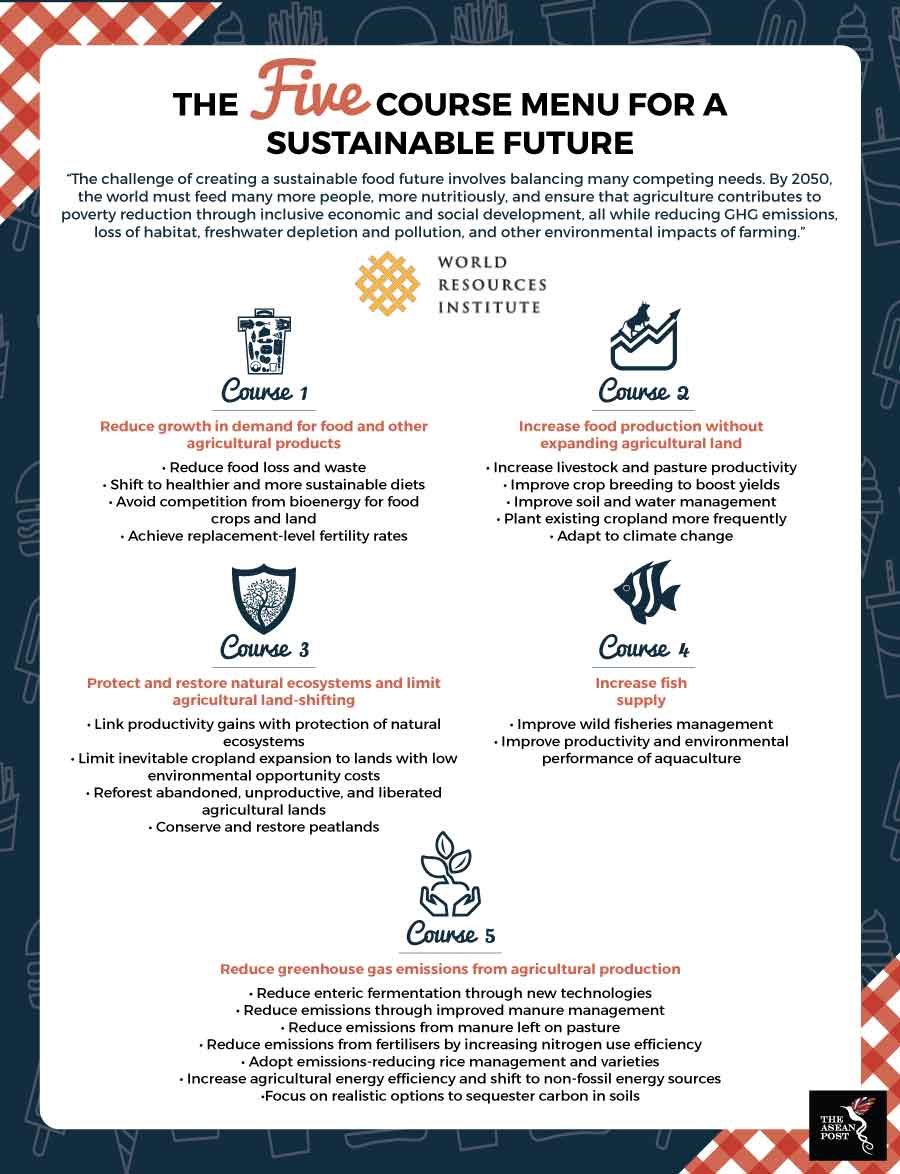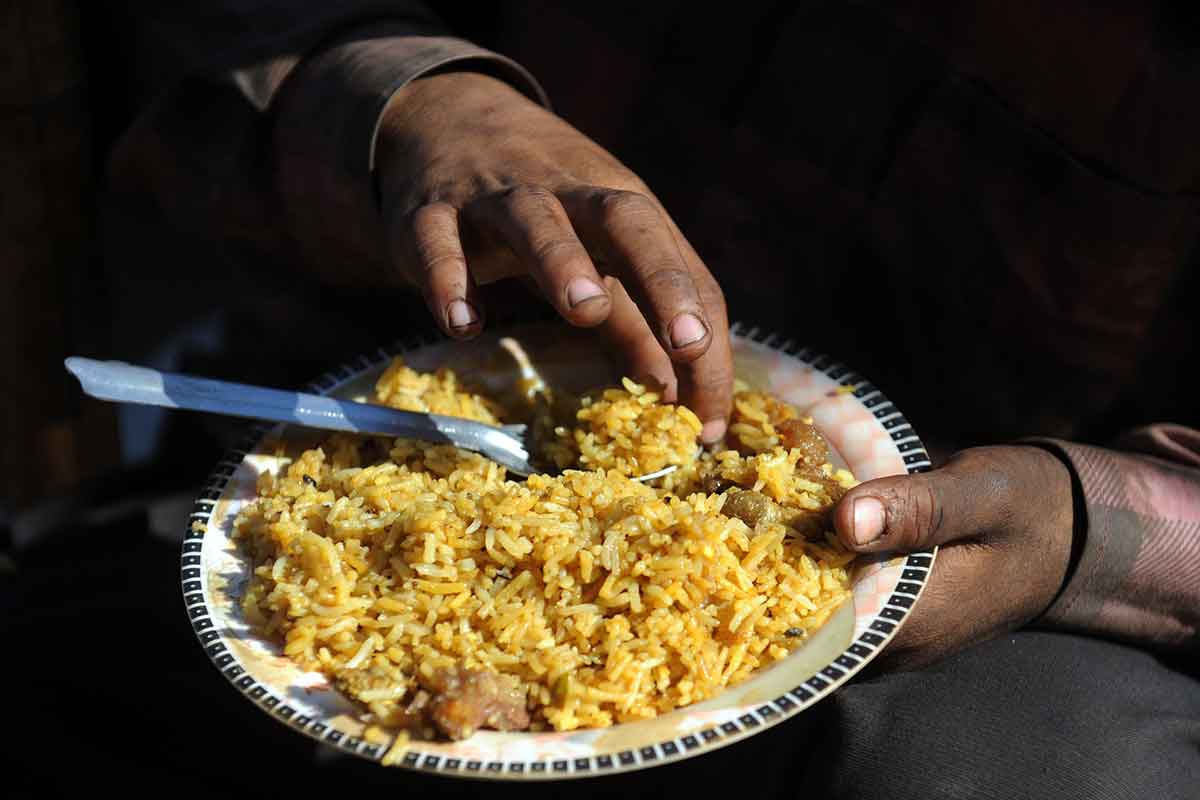In the last three years, the absolute number of people affected by undernourishment or chronic food deprivation globally has been on an increasing trajectory. The United Nations Food and Agriculture Organization (FAO) estimated that, with the reversal in trends, there were 821 hungry million people in 2017, up from around 804 million people in 2016.
In Southeast Asia, the prevalence of a severely food insecure population or people who have experienced entire days without eating due to a lack of money or other resources has increased from 7.3 percent or 46 million people to 10.1 percent or 65.8 million people, between 2014 and 2017.
The current scenario is a result of a food system where agriculture has already used almost half of the world’s vegetated land and generates one quarter of annual greenhouse gas (GHG) emissions. The issue of adequately feeding the projected global population of 10 billion people in 2050 without further destroying the environment and climate, and at the same time achieving sustainable development, is one of the issues being negotiated at the 24th Conference of the Parties (COP24) to the United Nations Framework Convention on Climate Change (UNFCCC).
Underappreciated, underestimated, undervalued
The underappreciated gravity of the situation is clear. According to the ‘Creating a Sustainable Food Future’ report by the World Resources Institute (WRI) released this week, this is due to underestimation of competition for land, particularly pastureland; double counting in proposed land-use solutions; and undervaluation of climate implications from land-shifting. In addition to pressure asserted by a ballooning population, the global food demand is also multiplied by the rapid rise of a global middle class that gravitate towards more carbon- and land-intensive high-meat diets.
“The challenge of creating a sustainable food future involves balancing many competing needs. By 2050, the world must feed many more people, more nutritiously, and ensure that agriculture contributes to poverty reduction through inclusive economic and social development, all while reducing GHG emissions, loss of habitat, freshwater depletion and pollution, and other environmental impacts of farming. Pursuing any one of these goals to the exclusion of the others will likely result in failure to achieve any of them,” the report stated.
However, despite the many challenges, a sustainable food future is achievable if actions are taken in time, at scale, with sufficient public and private sector dedication, stressed the WRI report. It laid out a menu of measures to address and close the quantified “gaps”. These include the food gap – the calories needed above the amount of food produced in 2010 to fulfil the demand in 2050, the land gap – the difference between the projected area needed to meet global food demand in 2050 and the amount of agricultural land used in 2010, and the GHG mitigation gap – the difference between agriculture-related GHG emissions projected for 2050 and the targeted cuts for 2050 that are necessary to help stabilise the climate.
Trimming the fat
The “menu for a sustainable food future” proposed by the WRI focuses on five courses that target reduction in demand growth for food and other agricultural products, increase in food production without expanding agricultural land, protection and restoration of natural ecosystems, increase in fish supply, and reduction in GHG emissions from agricultural production.
One of the key measures highlighted by the report is to reduce the amount of food loss and waste that eats nearly US$1 trillion annually. Globally, a third of food produced annually by weight and a quarter by calories is lost or wasted between production at the farm to post-consumer stage. This measure is key as reduction in food loss and waste by 25 percent globally could reduce the food gap by 12 percent, the land gap by 27 percent, and the GHG mitigation gap by 15 percent.
Relevant measures key to Southeast Asia include retaining edible crops and land from conversion into and for bioenergy production, adapting to climate change through the employment of interventions relevant to crop yields and farming viability, protection of peatland and other natural ecosystems, and improving the management of wild fish resources.

Source: World Resources Institute.
A just world is a world that strives to provide a sustainable food system that is adequate for all. Options for building that world with sufficient, nutritious food for everyone that also offers broader social, environmental and economic benefits are on the table. Now is the time for governments, the private sector and civil society to sit together and ruminate on the next course of action.
Related articles:
ASEAN’s role in global food security
Insuring farmers for food security
The meaty side of climate change
